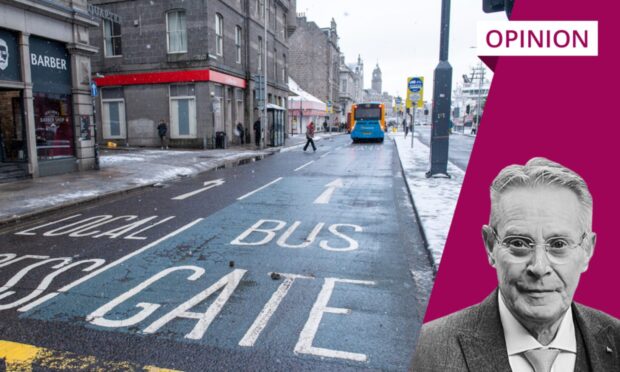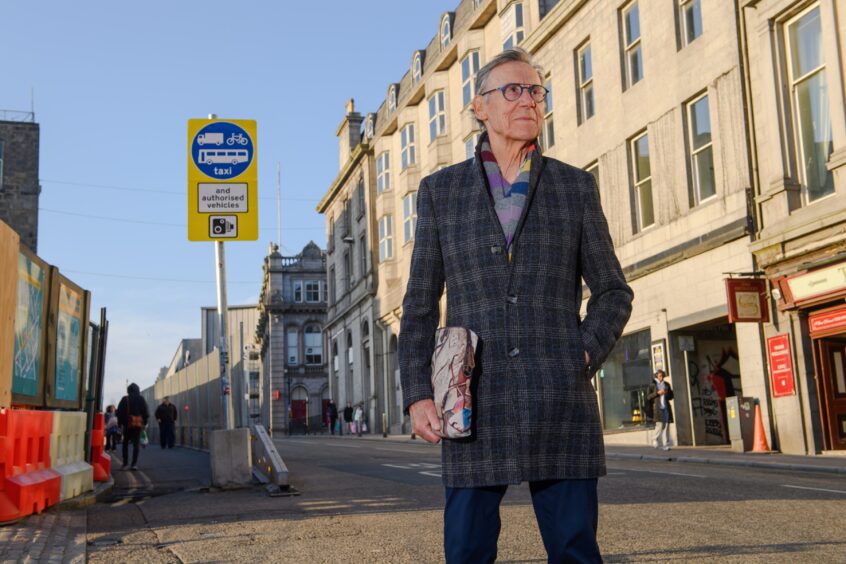I’ve been watching “Toxic Town” on Netflix and I started thinking about Aberdeen Council’s bus-gate battle, which is about to be dragged into court.
In as much that the council has put up the barricades in an attempt to defeat campaigners seeking transparency and proper explanations over a traffic-control issue of deep public concern.
The bus-gate farce has created a toxic atmosphere between the council and business community in particular, but also the greater public.
I’m not suggesting for a second that introducing bus gates has had the same catastrophic health effects as in Toxic Town.
This TV drama recreates a harrowing true story of birth defects among newborn babies in the English town of Corby.
A public health scandal caused by toxic chemicals released into the air around family homes during the demolition of steel works, and a cavalier attitude towards disposing of dangerous debris.
A situation exacerbated by Corby council pressing on doggedly to make a bad job even worse.
Many readers will know that before this disaster Corby’s success was made possible by huge numbers of Scottish families relocating to Northamptonshire to become the workforce for the steel industry.
But what struck me most was the political machinations, skulduggery and stubborn egos on the local council which fought tooth and nail to try to outwit a crusading lawyer fighting on behalf of parents.
A deluded determination personified by an overbearing council boss who told the lawyer that their opposing scientific arguments would end in stalemate.
“You’re expert will tell the court he’s 95 per cent right and our expert will say we’re 95 per cent right”.
He hoped the status quo was maintained, but failed.
Chaos has reigned in Aberdeen since bus gates were introduced
Aberdeen anti-gates business campaigners also have a crusading lawyer to lead them into court in Scotland shortly; a man who has already defeated Highland Council over a similar crippling traffic issue in Inverness.
In Aberdeen chaos reigned after the bus gates were enforced and footfall plummeted for city businesses, some firms shut down or relocated and millions in fines were plundered from confused drivers trapped by the gates.
Apart from making money from punishment fines, this grand scheme’s sole achievement appears to be making the buses run on time at the expense of private traffic.
The council has refused so far to give ground despite a rather polite-sounding Aberdeen campaign called the Commonsense Compromise, which tried in vain to reach a settlement agreeable to both parties.
The council has been having a problem with right turns.
Some might argue that’s been the issue all along: too many wrong turns.
But one in particular – an infuriating “no right turn” ban in Union Terrace near HM Theatre, which was part of the bus-gates package.
This was going to be lifted as a concession but quickly reinstated when the council discovered it was creating an even bigger legal mess.
More than 10% of drivers are routinely ignoring sign
Now under further scrutiny as P&J inquiries showed no police action has ever been taken about drivers turning right – and that more than 10 per cent are actually ignoring the sign routinely.
I have somehow managed to resist the urge to follow suit even though it would be simple commonsense, and I sense my car is aching to turn right whenever I’m at this junction.
Contrary to the facile opinion of at least one correspondent that I think I have some kind of divine right to drive where I like, nothing could be further from the truth.
I actually park and walk around town.
My sole motivation has been a fear that the democratic process was trampled on during the implementation stage.
Which is why I started calling for a legal challenge long before it came to pass.
This point of view is not designed to tarnish the city, but make it better.
One or two have questioned whether 12,000 names on a petition against the gates was merely a drop in the ocean.
Missing the point entirely, of course: it wouldn’t matter if only 12 people signed – it’s not about how many, but the strength of the case being made. There were 18 children in Corby.
Aberdeen’s attack in the Court of Session focuses on five issues.
Much of this mirrors my concerns over many months.
Such as the elusive legal issues nobody seems to get to the bottom of, the complex and baffling council financial commitments, the use of obscure experimental traffic regulations to implement cataclysmic road changes without proper democratic consultation and if it was unwise for council and bus bosses to be seemingly “in cahoots” to push it through.
I seem to recall one bus executive waving aside opposition by dusting down that old cliche about “you can’t make an omelette without breaking eggs”.
I’m sure the council’s intentions were honourable, but I fear more has been broken since then.
David Knight is the long-serving former deputy editor of The Press and Journal


Conversation